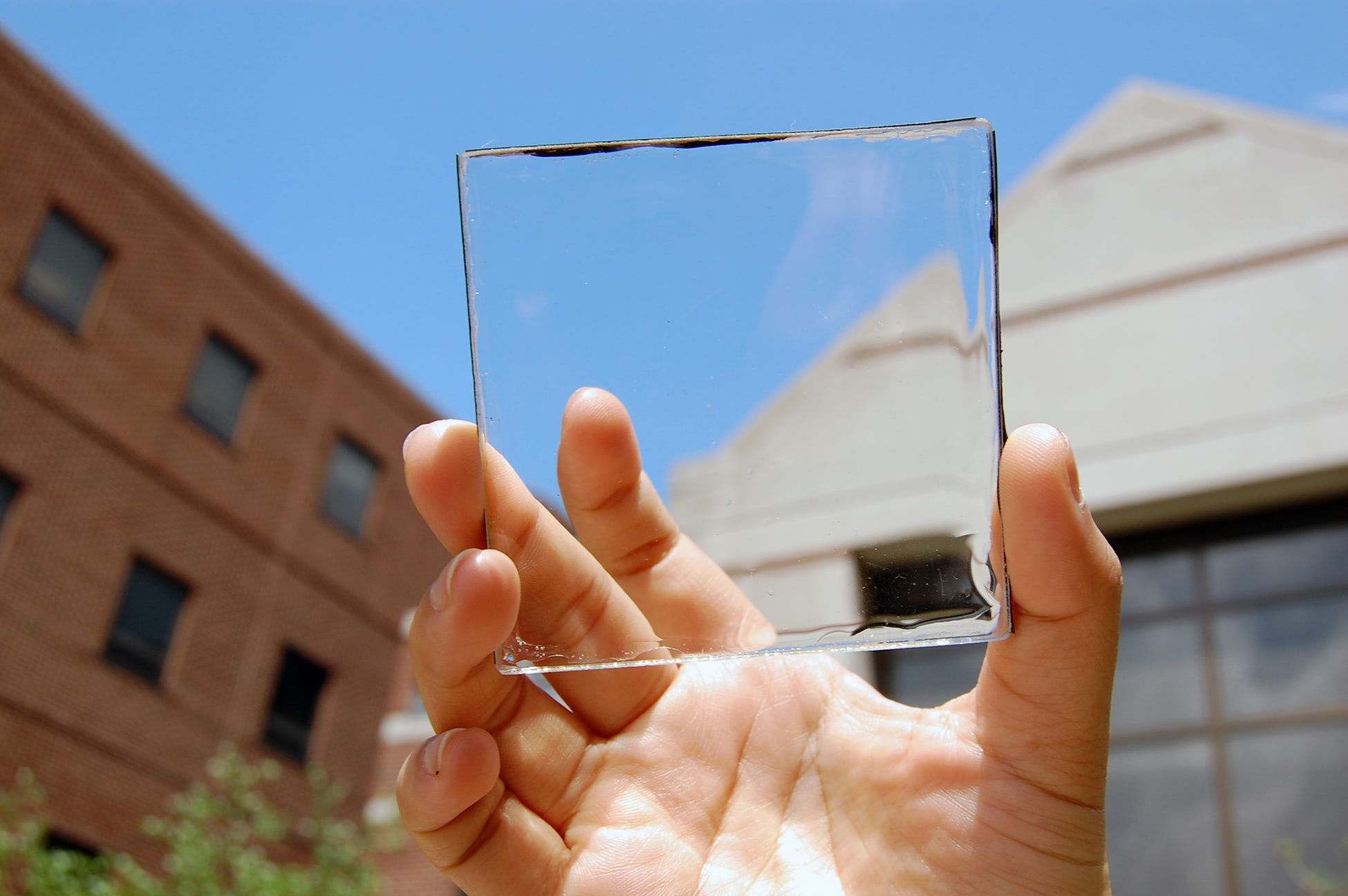Korean Scientists Create ‘INVISIBLE SOLAR PANELS’ That Allow Windows To Generate Electricity

In the heart of our bustling cities, space is a luxury. Rooftops are crowded, open land is scarce, and the challenge of adopting renewable energy looms large. Traditional solar panels, while effective, often demand space we simply don’t have. But what if the glass around us—windows, skyscrapers, and even phone screens—could silently generate power without disrupting their transparency or purpose?
Transparent solar panels offer exactly that. This groundbreaking technology has the potential to weave renewable energy into the everyday fabric of urban life. By turning ordinary glass into an invisible power source, these panels solve the spatial challenges of traditional solar systems while maintaining the sleek aesthetics of modern architecture. This is more than innovation—it’s a clear step toward a sustainable, energy-efficient future.
The Clear Solution to Urban Energy Challenges
In 2014, researchers at Michigan State University (MSU) developed the first fully transparent solar concentrator, opening the door to a revolutionary approach to solar energy. Unlike traditional panels, this technology absorbs invisible wavelengths—such as ultraviolet and near-infrared light—while allowing visible light to pass through, keeping the glass clear. The absorbed light is then redirected to thin photovoltaic strips placed at the edges of the panel, where it is converted into electricity.
Since this breakthrough, scientists have worked tirelessly to refine the technology, striking a delicate balance between transparency and energy efficiency. Early prototypes achieved only 1% efficiency, but ongoing research has pushed this number closer to 5%, with future designs aiming even higher. According to Richard Lunt, a lead researcher at MSU, these panels have the potential to turn every glass surface—from skyscraper windows to smartphone screens—into a power source, reimagining how solar energy fits into our lives.
A Transparent Breakthrough from Korea
 Image source: The Journal of Power Sources
Image source: The Journal of Power Sources
In the quest to transform glass into a source of clean energy, scientists at Incheon National University in Korea have achieved a game-changing milestone: the creation of a fully transparent solar cell. Led by Professor Joondong Kim and detailed in the Journal of Power Sources, this breakthrough demonstrates how innovative materials and smart engineering can bring us closer to a carbon-free future.
The team’s design revolves around a critical component of solar cells: the heterojunction, where light is absorbed and converted into electricity. By combining titanium dioxide (TiO₂) and nickel oxide (NiO), two environmentally friendly semiconductors, they developed a system that effectively captures invisible ultraviolet light while allowing visible light to pass through. This clever combination makes it possible to generate electricity without compromising transparency.
Why This Matters Now
Five years after the Paris Climate Agreement, the world is racing to transition from fossil fuels to renewable energy. Solar power, as the most abundant and reliable energy source, remains a key pillar of this transition. Yet, traditional solar panels—being opaque—limit their use to rooftops and large solar farms, keeping them out of sight and often far from where energy is consumed. Transparent solar cells change the game by offering the potential to seamlessly integrate renewable energy into windows, buildings, and even everyday devices like smartphones.
Breaking Down the Technology Behind Clear Solar Panels
Titanium dioxide, widely used in traditional solar cells, stands out for its excellent electrical properties, UV light absorption, and non-toxic nature. Paired with nickel oxide, a material known for its high transparency and ease of production, the researchers created an efficient and eco-friendly solution. Nickel, being one of Earth’s most abundant elements, also ensures that this technology could scale affordably and sustainably.
According to Prof. Kim, “The unique features of transparent photovoltaic cells could have various applications in human technology.” Indeed, the potential spans everything from energy-generating skyscrapers to smart devices powered by sunlight. This innovation doesn’t just mark progress in solar technology—it redefines what’s possible for renewable energy in a world striving for carbon neutrality.
Applications and Efficiency of Transparent Solar Panels
Transparent solar panels are changing the way we think about renewable energy by blending it into everyday life. Unlike traditional panels, which demand dedicated space, these innovative panels turn windows, facades, and even skylights into power-generating surfaces without obstructing views or compromising design.
A World of Possibilities
The versatility of transparent solar technology opens doors across industries:
- Buildings and Architecture: Skyscrapers, homes, and offices can integrate these panels into their windows and facades, creating structures that are both functional and energy-efficient.
- Urban Infrastructure: Public spaces like bus stops and train stations can generate power using glass installations that double as energy sources.
- Consumer Electronics: From smartphones to wearable devices, transparent panels offer a sustainable way to extend battery life without bulky additions.
Efficiency Meets Innovation
Historically, transparent solar panels faced a trade-off: maintaining visibility often came at the cost of energy efficiency. However, advancements in materials like perovskites and organic photovoltaics are closing the gap. Companies like Ubiquitous Energy have developed panels with energy conversion efficiencies reaching 9.8%, a significant leap from the 1% achieved in early models.
As these technologies evolve, their efficiency and affordability are expected to improve further, paving the way for mass adoption. Transparent solar panels are no longer just a concept—they are an emerging reality with the potential to power urban environments while preserving their aesthetic and functional integrity.
The Promise and Challenges of Transparent Solar Technology
Transparent solar panels hold immense promise as a transformative energy solution, but several challenges remain on the path to mass adoption. With a focus on innovation and scalability, this technology is poised to reshape urban sustainability and renewable energy integration.
One of the main hurdles is economic viability. Current production relies on advanced materials like perovskites and precise manufacturing techniques, making transparent solar panels more expensive than traditional ones. However, as research progresses and production scales, costs are expected to drop significantly, paving the way for broader accessibility.
Efficiency is another critical factor. Transparent panels currently lag behind opaque solar cells in energy conversion rates, as maintaining transparency often reduces the amount of light they can absorb. Researchers are addressing this by improving materials like titanium dioxide and nickel oxide, as well as exploring perovskite-based designs to enhance performance without sacrificing visibility.
Shaping the Future of Energy Integration
Despite these challenges, the potential impact of transparent solar panels is immense. By turning windows, facades, and even vehicle glass into power sources, they can seamlessly integrate renewable energy into urban infrastructure without requiring additional land or altering aesthetics. This makes them particularly valuable in densely populated areas where space is limited.
Looking ahead, the vision for transparent solar panels extends beyond technology. It’s about embedding sustainability into the fabric of our daily lives—creating buildings that power themselves, devices that charge on the go, and cities that thrive on clean energy. With continued innovation and investment, this technology is set to play a vital role in the global transition to carbon neutrality, proving that the future of energy can be as clear as the glass it powers.
A Clear Vision for Renewable Energy
 Image source: Pexels
Image source: Pexels
Transparent solar panels aren’t just an invention—they’re a reimagination of how we live with energy. Think about it: glass that powers our homes, offices, and cities without us even noticing. It’s not just about solving the problem of limited space—it’s about merging sustainability with the beauty of everyday life. This is innovation that works with us, not against us.
Sure, the road ahead has challenges. Efficiency needs to improve, costs need to come down, and the technology has to scale. But isn’t that how all great ideas start? Step by step, problem by problem, until they become unstoppable forces for change. Transparent solar panels are proof that when we rethink what’s possible, we find solutions hiding in plain sight.
The future of renewable energy doesn’t have to be loud or obvious. It can be quiet, clear, and revolutionary. Transparent solar panels remind us that the answers we seek often blend into the world around us, waiting for us to notice them. The question is: will we take the next step forward?
Featured Image Source: Michigan State University MSUToday
Loading...






